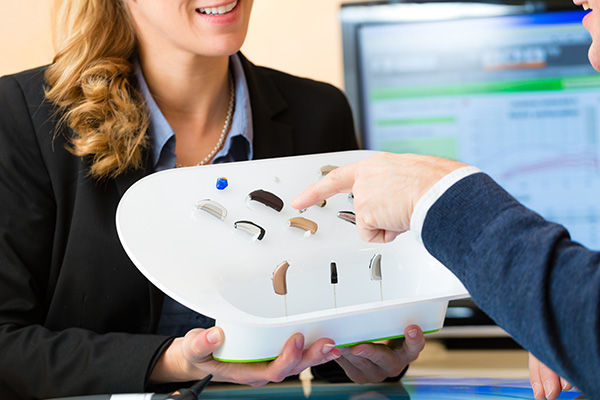A Step-By-Step Guide to Hearing Aid Fittings
Hearing loss can be a challenge, but finding the right hearing aid to fit

By: admin | October 28, 2021
Hearing aids have come a long way in recent years. Many different types have been developed with the mind to address various needs and different levels of hearing loss, and knowing that there’s a large variety of styles on the market can be very comforting to those new to wearing any kind of aids at all.
So, if you’re curious about your hearing aid options, now that you’ve been diagnosed with a form of hearing loss, it’s important to do a bit of research about the best types, fit and popular styles currently on the market.
This is a good way to back up any conversations you have with your audiologist, and it can also help you feel a lot more comfortable in making your decision when the time comes. And with that in mind, here are the most popular types of hearing aids currently worn on a global scale.
One of the most popular aids on the market, the in-the-ear hearing aid is an aid that fits into the outer bowl. It’s a popular form of hearing aid thanks to just how customizable it is; it’s large in size, meaning more additional features can be added in and it can be colored any which way the wearer likes. This makes it incredibly popular with children, teens and older adults enjoy how it can be colored to look like their own skin or hair.
Another incredibly popular hearing aid, the in-the-canal hearing aid is a smaller yet still durable form of hearing aid that sits just inside the canal. Thanks to their more adaptable size, they can be used to address many ranges of hearing loss, and they’re a lot more discreet compared to the ITE form. This makes them popular with young adults, as they’re great for use in professional situations, while still being easy to remove and control as needed. They can also be customized like the ITE aids, with additional features able to be added to the setup.
An incredibly small form of hearing aid, the completely-in-canal hearing aid is a more accessible form of the invisible-in-canal (IIC) hearing aid that sits very deeply into the ear canal. Not able to be seen unless someone was specifically looking for it, this form of hearing aid is usually only prescribed by an audiologist for young to middle aged adults. They require a certain amount of dexterity in order to remove them, in cases of needing to change a battery or getting them to connect to their remote control.
The receiver-in-canal hearing aid is one of the most popular forms of hearing aids on the market, thanks to the ease of use and typical job of being a person’s first form of hearing aid. They’re a lot easier to adapt to and can allow people of all ages to get used to both wearing and using a hearing aid in a variety of day to day situations. They can be upgraded if they’re found to not be suitable, but they very much act as a gateway for audiologists to help those with hearing loss to address their hearing problems.
Similar to the RIC hearing aids above, the behind-the-ear aid sits behind the top of the ear, and can be clearly visible on the side of someone’s head. Bigger than the RIC type as well, it’s a lot more customizable and it’s a popular choice for audiologists to use thanks to just how accessible it is as a hearing aid. They can be fitted fast, in the space of a half hour appointment, and they can also be scaled down for the comfort of the wearer if need be.
So, if you’re curious about the most popular types of hearing aids, and whether any of them will be right for you, be sure to get in touch to talk to one of our audiologists. Here at Salyer Hearing Center, we’re available to take your call at any time via any of our hearing centers: you can call our Sylva center at 828-586-7474, our Franklin center at 828-524-5599 and our Murphy center at 828-835-1014. Don’t wait and let your hearing loss potentially hold you back; call us to have a friendly and informal conversation about what hearing aids can do for you and which one will work best for your type and level of hearing related issues.

Hearing loss can be a challenge, but finding the right hearing aid to fit
By: admin | March 26, 2024

Have you ever considered the role hearing plays in your daily life? From
By: admin | December 28, 2023

Hearing aids play a major role in the treatment and management of hearing
By: admin | November 25, 2023
We are proud to serve the people of Western North Carolina with industry leading technologies in our three locations across the region: Candler, Sylva, Franklin and Murphy. Call us and join our family for a lifetime of better hearing.
